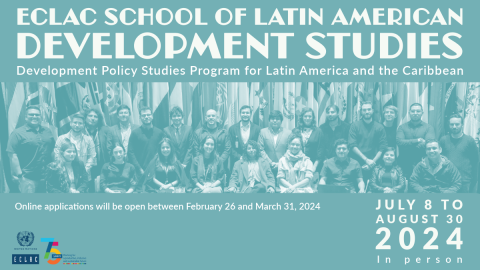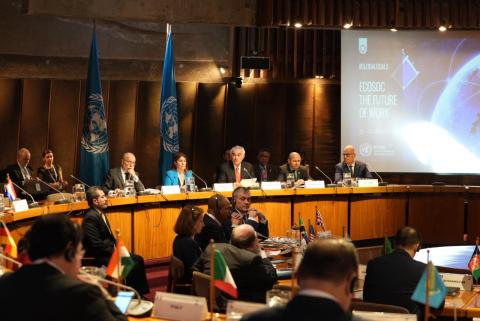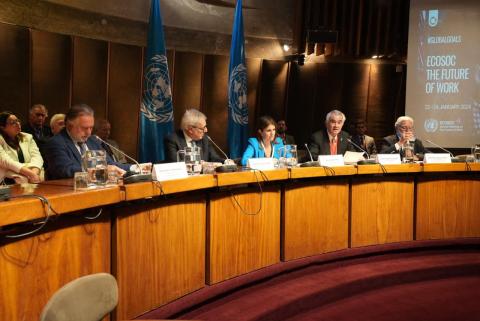Announcement
The Economic Commission for Latin America and the Caribbean (ECLAC) published in 2015 diverse studies regarding the economic, social and environmental situation in the region, including six flagship annual reports that provided statistical information, timely analysis and short- and medium-term outlooks on issues as varied as the expansion of Gross Domestic Product (GDP), the behavior of foreign investment and international trade, and the evolution of poverty and inequality.
On January 26, ECLAC presented the Social Panorama of Latin America 2014, in which it indicated that 167 million people were in situations of poverty in 2014, 71 million of whom suffered extreme poverty or indigence.
Read the report and the press release here.
On February 2, the Commission presented its Statistical Yearbook of Latin America and the Caribbean 2014, which offered a statistical overview documenting the social, economic and environmental development of the region’s countries.
Access the report and the press release here.
On May 27, the report Foreign Direct Investment in Latin America and the Caribbean 2015 was launched, in which ECLAC signaled that Foreign Direct Investment (FDI) flows towards Latin America and the Caribbean shrank 16% in 2014 to end at $158.803 billion dollars.
See the document and the press release here.
In an update to this report, on October 15, the organization announced that FDI inflows to 16 countries of the region declined 21% during the first half of 2015 compared with the same period of the prior year, totaling $88.717 billion dollars (read the press release here).
On July 29, ECLAC projected that Latin America and the Caribbean would grow just 0.5% in 2015, when it unveiled the Economic Survey of Latin America and the Caribbean 2015, which included GDP estimates for countries for the year and called on officials to vitalize the investment process to resume growth and improve the productivity of the region’s economies.
See the report and the press release here.
On October 20, the Commission presented Latin America and the Caribbean in the World Economy 2015 in Mexico City. In this report ECLAC indicated that the value of the region’s exports would decline for a third straight year in 2015 and contract -14%. This means that the period between 2013 and 2015 was the region’s worst three-year export performance in eight decades.
Read the report and the press release here.
Finally, on December 17, ECLAC unveiled its last annual report for 2015, the Preliminary Overview of the Economies of Latin America and the Caribbean 2015, in which it updated the projections provided previously and presented growth estimates for countries in 2016. In this document the organization indicated that the region’s economies would grow on average just 0.2% next year, in the midst of a complex global scenario.
See the report and the press release here.
During 2015, ECLAC also held three regional conferences (about the information society, population and social development in Latin America and the Caribbean) and three high-level intergovernmental meetings (the statistical conference of the Americas, regional council for planning and Principle 10), among other relevant gatherings.
The regional UN organism also published this year important institutional documents such as the regional monitoring report on the Millennium Development Goals in Latin America and the Caribbean, the United Nations regional commissions report on the deliverance of the post-2015 development agenda, the study on financing for development in Latin America and the Caribbean, and the documents of inter-regional meetings about the economic relations between the region and the European Union and China.
More information:



